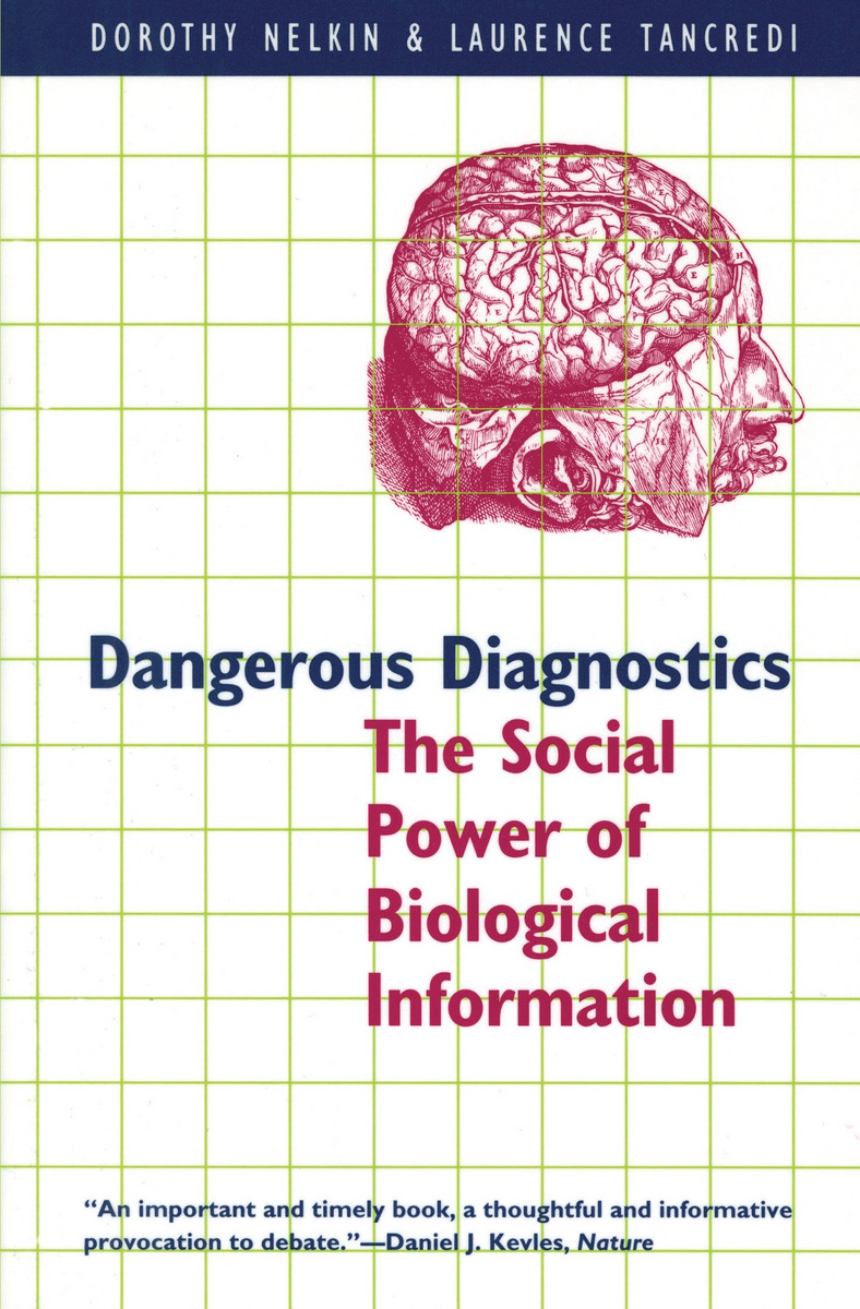Dangerous Diagnostics
The Social Power of Biological Information
Dangerous Diagnostics is a powerful study of the pervasiveness of diagnostic testing and the potential it offers institutions to classify, categorize, and ultimately control individuals. Nelkin and Tancredi explore the ethical, social, and legal implications of cutting-edge technologies that can lead to new forms of discrimination in the name of standardized, objective measurements. They caution against the creation of an underclass deemed unemployable, untrainable, or uninsurable by such diagnostic tests.
Table of Contents
Preface to the 1994 Edition
Preface
Chapter 1. The New Diagnostics
The Cultural Appeal of Testing
Metaphors of the Body and Mind
Institutional Uses of Tests
Chapter 2. Defining Diagnosis
The Uses of Diagnosis
Research Developments and Diagnostic Trends
Commercial Development
Chapter 3. Interpreting Tests
Interpretive Assumptions
Reliability of Tests
Beyond the Clinical Context
Chapter 4. Diagnosis in the Health Care System
Pressures on the Health Care Delivery System
The Changing Structure of Health Care Delivery
Litigation
Existing Strategies to Meet Institutional Needs
Restricting Access
Efficiency Techniques: Algorithms
Using Consulting Psychiatrists
The Use of New Diagnostic Technologies
Genetic Testing and Counseling
Psychiatric Evaluations and the Definition of "Normal Behavior"
Patient Profiling and the Use of Tests for Economic Testing
The Growth of Medical Control
Chapter 5. Testing in the Workplace: Predicting Performance and Health
Pressures on the Firm
The Company as Insurer
Strategies
Placing Responsibility on the Worker
Empowering Corporate Medical Services
Predicting Proneness to Disease
Excluding People from Work
New Biological Testing Techniques
Chromosomal Monitoring
Genetic Screening
Genetic Struggles
Chapter 6. The Schools: Testing for Learning Problems
Social Pressures on the Schools
Accountability
Meeting Legislative Demands
Current Strategies
Standardized Tests
Prescribing Drugs
Emerging Biological Explanations and Diagnostic Advances
Classification and Control
Chapter 7. The Medical Empowering of Legal Institutions
Pressures and Demands
Defining Criminal Responsibility: The Insanity Defense
Assuring Efficiency: Administrative Strains on the Courts
Existing Strategies
Medicalization
The Search for Scientific Evidence
New Technologies and Future Developments
Chapter 8. Social Control Through Biological Tests
Institutional Conformity and the Use of Tests
Professionals as Institutional Agents
Biological Discrimination
Glossary
Notes
Index
Preface
Chapter 1. The New Diagnostics
The Cultural Appeal of Testing
Metaphors of the Body and Mind
Institutional Uses of Tests
Chapter 2. Defining Diagnosis
The Uses of Diagnosis
Research Developments and Diagnostic Trends
Commercial Development
Chapter 3. Interpreting Tests
Interpretive Assumptions
Reliability of Tests
Beyond the Clinical Context
Chapter 4. Diagnosis in the Health Care System
Pressures on the Health Care Delivery System
The Changing Structure of Health Care Delivery
Litigation
Existing Strategies to Meet Institutional Needs
Restricting Access
Efficiency Techniques: Algorithms
Using Consulting Psychiatrists
The Use of New Diagnostic Technologies
Genetic Testing and Counseling
Psychiatric Evaluations and the Definition of "Normal Behavior"
Patient Profiling and the Use of Tests for Economic Testing
The Growth of Medical Control
Chapter 5. Testing in the Workplace: Predicting Performance and Health
Pressures on the Firm
The Company as Insurer
Strategies
Placing Responsibility on the Worker
Empowering Corporate Medical Services
Predicting Proneness to Disease
Excluding People from Work
New Biological Testing Techniques
Chromosomal Monitoring
Genetic Screening
Genetic Struggles
Chapter 6. The Schools: Testing for Learning Problems
Social Pressures on the Schools
Accountability
Meeting Legislative Demands
Current Strategies
Standardized Tests
Prescribing Drugs
Emerging Biological Explanations and Diagnostic Advances
Classification and Control
Chapter 7. The Medical Empowering of Legal Institutions
Pressures and Demands
Defining Criminal Responsibility: The Insanity Defense
Assuring Efficiency: Administrative Strains on the Courts
Existing Strategies
Medicalization
The Search for Scientific Evidence
New Technologies and Future Developments
Chapter 8. Social Control Through Biological Tests
Institutional Conformity and the Use of Tests
Professionals as Institutional Agents
Biological Discrimination
Glossary
Notes
Index
